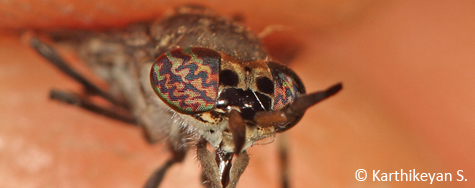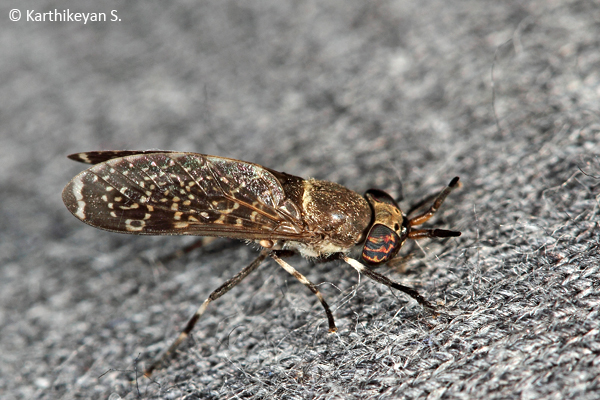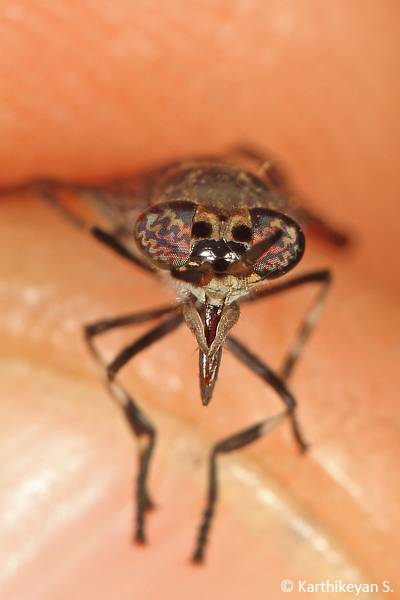A visit to a forest invariably throws up interesting things. This time it was in the form of little flies! These flies seemed to be all over the place. They were a minor irritant during the day time, particularly when in the outdoors. I found people constantly, in an animated fashion, waving their hands trying to ward off these little insects.
I watched still others with me trying to swat and kill these flies, but in vain. Being adept fliers, they were way too quick for a human hand. In a bid to keep these persistent flies at bay, I waved my hands too! And, in a stroke of luck, I got one between my fingers! I held on to it and trained my camera on it. I was completely taken aback by what I saw. The eyes of the fly were a sight to behold!
Now that I was smitten by the beautiful eyes of the fly, I wanted to photograph the entire insect. So I waited for one to settle on a friend. I did not have to wait long. The fly itself was predominantly black and white with a wash of yellow. Only the eyes stood out as I was looked through the lens.
Flies belong to an insect order called Diptera. Order Diptera is diverse and has over 100000 species! The one I have been talking about is the horsefly. Horseflies belong to one large family of flies called Tabanidae which itself consist of about 4000 species with a worldwide distribution, exceptions being remote islands and very cold areas.
But why were they bothering us?
I got an answer to this question upon reading about them. Female horseflies need a meal of blood before they can reproduce – the same reason that mosquitoes drink blood! Horseflies essentially feed on mammalian blood or for that matter blood of birds and reptiles too. Horseflies, unlike many other creatures, do not suck blood. They make a deep cut and anticoagulants in their saliva prevent blood from clotting and they lap up blood by way of a sponging action!
As one should expect, I never saw a male horsefly as the males feed on nectar and are considered to be important pollinators of flowers!
Horseflies, as adults live for a very short period. They perform their primary role of reproduction and die. When they are around, albeit brief, they are playing their part in the larger scheme of things.


